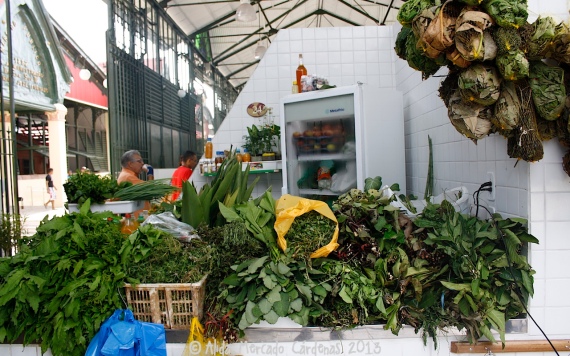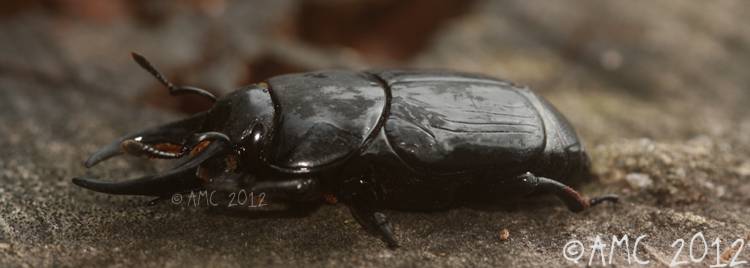Pink dolphins
We had seen pink dolphins (Inia geoffrensis) in the Rio Negro before, but some weeks ago we went on a trip specifically to see dolphins. It was great, they would just swim around us. Yes, they were looking for the fish, but they were free to come and go. It was a very nice experience to see them so close.

Balbina and the blue-headed parrots
Last month we went for a weekend trip to Balbina, the main attraction was fishing for tucunare in the Balbina dam. I didn’t go fishing though. I stayed in the town, Balbina, and went for a walk around, until the edge of town. I could see the lake formed by the dam, and the dead trees on the lake. The dam was built to provide energy to Manaus, as a renewable source, however it emits so much methane that it turns out to be worst than a coal plant. I’ve written about that before (Weekend trip to Balbina). There is another view of the tree trunks on that post.
While looking at the lake, I could also hear a lot of parrots, and eventually saw a few of them. Blue-headed parrots (Pionus menstruus) were flying around, and some were resting on the canopy of nearby trees.
Piranhas at the market
This month’s meeting of the Photography group was at the recently inaugurated market in Manaus. It is a very nice market, the construction is from the colonial times, with material brought from England and France. The crafts section was my favorite, and the most colorful one. I found some piranhas there. The fruit and veggie section had just a few stands, but with lots of different herbs, dried and fresh. We got jambu for today’s lunch, pato no tucupi.
Cachoeiras – day trip to the waterfalls
Last Sunday we went on a day trip to Presidente Figueiredo with a group from Fotografia Manaus. It was a great trip, we discovered some new sites and had a great time. Here are a first set of photographs from the trip.

Cachoeira das Araras, Presidente Figueiredo, Amazonas
Is it a jaguar?
As we went into the forest last week, we stopped a couple of times to photograph trees and flowers. In one spot, we saw tracks on the road. I think they were from a jaguar, but it could also have been a mountain lion. A big cat for sure! Very exciting. My husband saw a black jaguar crossing the road near that spot a few months ago.
Red flower
We saw many flowers like this, however most of them were up on the trees where the vines tangle around and go up into the canopy. This vine was growing on the floor next to the dirt road and we could take a close look at it. Many ants were on the flower, and some bees were visiting it too.
blue weevil!

Last weekend we went for a walk to the Bosque da Ciencia. It was a short visit but we found a beautiful beetle, a blue weevil! It is a broad-nosed weevil (Curculionidae: Entiminae) with some blue on its legs and antenna.
Brazilian coloured beetle
This weekend we went for a walk to the Reserva Duke, in the northern part of Manaus. Part of the reserve is a botanical garden (Jardim Botanico) with nice trails in the forest and new exhibition areas in the forest. I really liked the little pirarucu we saw, it was just a few months old, and about 20 cm long. I will write a post about them later on. While we were looking at the exhibit about frogs and toads, I saw a beetle on the floor. I stopped paying attention to the frogs at that point. Here’s what I saw:
Into the forest


On our way to the research site. It is a long road through the forest. When one is lucky some animals can be seen crossing the road, ant eaters, wild boars, and last week a black jaguar! I wish I had been there.
sunset
I decided to take the challenge to photograph the sunset. It is a different subject from what I usually photograph. I am happy with this result. I want to try different locations around Manaus to have a different view of the bridge.
The bridge, Ponte Rio Negro, links Manaus and Iranduba, and was inaugurated less than two years ago. We have crossed it a couple of times.
Peixe-boi
Amazon or South American manatee (Trichechus inunguis) is commonly hunted for meat and oil along the Amazon River. I don’t know how people manage to find them, but they do, and it is common that little ones are left without their mothers. They also get hurt by the boats. There are programs to help manatee populations recover and to reintroduce them in some areas with support of the local people. Researchers at INPA are also working on this. This photograph was taken at the Bosque da Ciencia where some manatees are brought in for recovery.
brown pale-fronted capuchin
Last year, on my birthday, I went on a boat trip on the Amazon. We made a stop at a floating restaurant, and nearby we saw a group of brown pale-fronted capuchins (Cebus albifrons (Humboldt, 1812)).
Guan couple
Two weeks ago I saw a couple of Guan on the mango tree in our garden. We’ve identified them as Spix’s guan (Jacu-de-spix)
Penelope jacquacu. The one on the left was cutting leaves of maracuya and giving them to the one on the right. After a while they each rested on separate branches of the tree. It was the first time I saw them, and I haven’t seen them back since.
Long-horn beetle
This long-horn beetle (Cerambycidae) was near one of the room doors of the Arawak hostel in Praia do Açutuba, Iranduba, Amazonas. The hostel was the meeting point for the Grupo de Fotografia Manaus March trip. Every month, on the first Sunday, a trip is organized, to a park, a special event or a nearby site like the beach where we went two weeks ago.
Amazon hister beetle
I went to spend a couple of days out in the field, that is the Amazon forest, as there was going to be a good churrasco and fishing the next day. Both were delicious meals! This beetle was floating on a little stream, we took it out and I took some pictures of it. It was complicated because of the color and it was so bright out. Different light conditions provide with a challenge when taking pictures. It was a good practice, I think it came out very nice.
Encontro das águas – beginning of the Amazon River
O Encontro das Águas.
The meeting of the waters, is where the Rio Negro flows into the Rio Solimões to form the Amazon River.
The Solimões comes from the Brazilian-Peruvian border, down from the Andes. It is light brown in color. The Rio Negro originates in eastern Colombia, and then joins the Orinoco in Venezuela, and when it enters Brazil it receives the name Rio Negro. It is colder, heavier, slower-moving and very acidic compared to the Solimões. It is due to these differences that they flow side by side without mixing for several kilometers, and thus the meeting of the waters occurs. This is a must for tourists that come to Manaus.
And traveling on a boat down the river admiring this phenomenon is how I celebrated my birthday this year.
leaf-cutter ant
One of the reasons I was so excited to come live here in Manaus was for all the insects I could encounter here. However, there are some that have given us trouble, and I’m thinking about ants. There are many species of ants in the garden and house, some are eating one of the bedroom doors, others decided that they like the dog food and sometimes the plate is covered with ants and other little ones just like sweet stuff, but those don’t bother me that much, except when my juice glass gets covered by them. Then there are many others in the garden. Those that like dog food, seem to like everything, I have seen them taking chicken feathers into their nest. but the worst are leaf-cutter ants! They have cut leaves of so many of our plants, just in one night the hibiscus were without leaves, and then they went for the nonis, and they have also gone up the mango tree. However, with so many of them I had the chance to practice taking photographs of moving insects. It has been complicated as they move so fast and so much. It’s the first time I try using a white background thanks to some macrophotography tips shared by my friend The Bug Geek.
This is a leaf-cutter ant of the Atta genus, (Hymenoptera, Myrmicinae, Attini).
Three-toed sloth Bradypus sp.
Since I’ve moved to the tropics, I’ve learned that there are two-toed sloths and three-toed sloths. I just recently found out that they each belong to a separate family, Megalonychidae (two-toed sloths) and Bradypodidae (three-toed sloths) and they are not closely related.
Sloths are arboreal mammals, the live up in the trees and their limbs are adpated to hang from trunks and branches where they sleep or rest for about 20 hours a day. I find it very interesting that they have to go down from the trees to poo about once a week. It’s also quite interesting that they have algae living on their fur.
There are four species within Bradypus, two of which can be found in this area, Bradypus tridactylus (pale-throated sloth) and Bradypus variegatus (brown-throated sloth). The pale-throated sloth (Bradypus tridactylus) has a more resticted range east of the Andes and south of the Orinoco River, occuring in the Guyana Shield region including northern Brazil south to the Rio Negro-Rio Solimoes region (where Manaus is located). The brown-throated sloth (Bradypus variegatus), on the other hand, can be found all the way from Honduras to northern Argentina.
A week ago, we went for a walk at Bosque da Ciencia, and we saw a sloth eating young leaves up on a tree. I’m still not sure which species we saw, the pale-throated sloth or the brown-thrated sloth. Can you help me identify it?
a few sketches
I’ve started sketching insects from the garden, here are a few.
We have a few floating plants in the garden pond. The flowers only last for a day; they are pretty purple with a yellow spot in the middle (I will try to do a sketch with color next time there is a flower).

purple dots!

Jardim Botanico, Reserva Ducke, Manaus



































